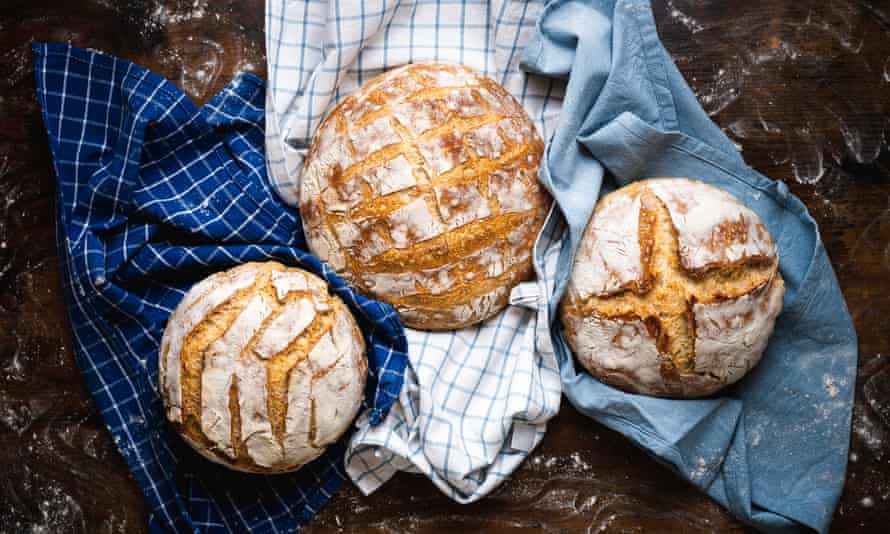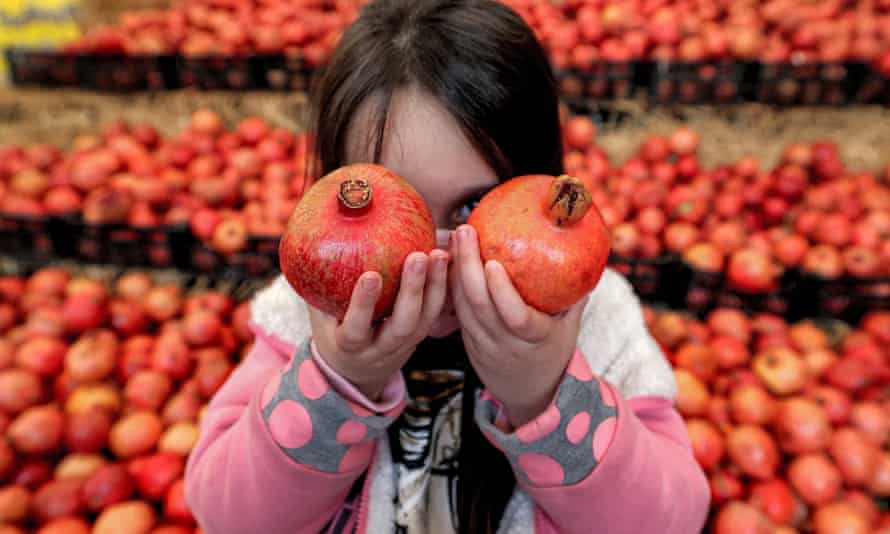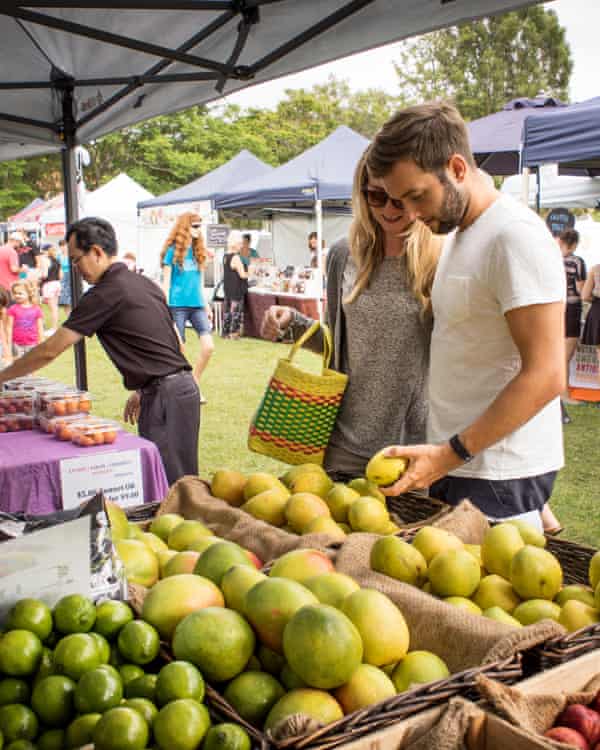
Global turmoil has trickled into Australia’s supermarket aisles, hiking the prices of many staple foods. But the upward pressure isn’t evenly distributed.
Bread – or, in fact, any wheat product, as well as eggs, meat and coffee beans are just a few casualties of spiralling inflation fuelled by punishing petrol prices, higher feed and fertiliser costs, conflict between major food exporters Russia and Ukraine, and tight global supply.
Australian shoppers are facing a price rise “perfect storm” at the supermarket right now, says Prof Wendy Umberger, executive director of the Centre for Global Food and Resources at the University of Adelaide.
While Australia ranks among the most food secure nations in the world, the blockage of wheat exports from Russia and Ukraine by Russia means domestic wheat producers are taking advantage of higher global export prices, she says.
Bad news for bread and pastry lovers – wheat prices are forecast to remain high this year, according to the Department of Agriculture, Water and Environment, while Umberger says it will take up to 12 months after the global conflict to see the market return to normal.
Both beef and lamb have also become more expensive, says Woolworths CEO Brad Banducci, with a lack of stock and the east coast drought the culprits. Retail prices are up 10% a kilo compared to this time last year, according to industry research body Meat and Livestock Australia.
Dairy lovers are also likely to be crying into their milk, with lower cow numbers and decline in domestic production forecast. Dairy Australia’s John Droppert says droughts are a factor in lower stock numbers and labour shortages have affected milk production, while some dairy farmers are also taking advantage of high beef prices.
As for fresh food prices, they’re being squeezed upwards by input costs and catastrophic weather conditions, says Shaun Lindhe, for peak industry body AusVeg, while labour shortages have meant some growers didn’t even plant, says Sydney Markets’ retail support manager and home economist Sue Dodd.
“Climate change is even more concerning [for food security] than war,” says Umberger.
“We are going to see more natural disasters leading to higher prices.”
But before you consider taking a second job, it is still possible to fill your trolley without breaking the budget, says cook and author Belinda Jeffery, who favours sustainable, seasonal eating.
Smart food selection and substitution, based on foods in plentiful supply, as well as being more adventurous with your menus, is the way to shop around inflation, she says.
Best value buys for autumn

Apples: most varieties, from Royal Gala and Kanzi, to Pink Lady and Fuji, are now in season. Expect to pay $2 to $8 a kilo, says Dodd. Much, much cheaper than out of season berries, with varieties such as blueberries prices at around $56 a kilo at the supermarket.
Avocados: prices for everyone’s smashed-on-toast favourite are low because avocados are more plentiful. “There’s been a very good growing season and a lot of extra supply coming out of Western Australia,” says Banducci. You’ll pay $1.20 up.
Baby peas: bought frozen, they are excellent quality and not expensive, says Jeffery. (Around $3.80 a kilo.) “Try them with pasta, olive oil and a little chilli.”
Broccolini: broccoli’s more glamorous cousin is now in season, meaning prices are down to $3 a bunch at markets. High in fibre, nutrients and with more protein than most other vegetables, it’s a good choice for greens.
Carrots: a stable for salads, stews, casseroles and stir-fries, at $2 to $3 a kilo, they’re also better than celery, at around $6 a bunch, for a crunchy snack.
Casserole beef: at around $18 a kilo compared to rump steak’s $45, it’s a slow cooker dream, says Jeffery. “Cheaper cuts such as stewing steak, shoulder or lamb or neck cutlets make flavoursome casseroles when combined with veggies, onions, garlic and potatoes.” Pork and chicken are also likely to be cheaper per kilo than prime beef, with prices holding, says Banducci.
Cauliflower: around $3 to $6 each, this versatile cruciferous vegetable can be steamed, boiled, roasted, sautéed or mashed.
Fresh and canned fish: while the price of popular varieties such as snapper are as high as $58 a kilo, cooking with varieties such as mullet or leather jacket is the way to save, says Jeffery. Canned fish can also be used in fishcakes, salads and bakes.

Grapes: “There’s a great supply coming out of South Australia,” says Dodd. Prices range from $3 to $20 per kg, depending on quality. Ideal for school lunches, desserts, or snacks.
Lemons and limes: both plentiful and useful for adding zing to salads, or sauces, rather than pricey dressings. You’ll pay $3 to $5 a kilo for lemons and 80c to $1.50 each for limes.
Pomegranates: fabulous with lamb or fish, or with desserts, says Dodd, they can be found at farmers’ markets for around $1.50 each.
Pumpkin: mash it, serve it roasted, or add it to frittata or pasta. From $1 to $2 a kilo.
Sweet potato: spend $2 to $4.50 a kilo and get a foodies’ favourite that adds substance and satiety to meals with 20g of carbohydrate per 100g.
Watercress: at $3 to $3.50 a bunch, it’s top value and likely to be cheaper than fancy lettuce. Cook it or use it in salads, says Dodd.
Nine tips for eating well on a budget

1. Compare your options
At some farmers markets, you’ll get better, fresher ingredients and pay less, says Jeffery, because they cut out the middle man. If this isn’t the case in your area, it’s also worth checking specialty green grocers’ prices against the major supermarkets, as bigger does not always mean cheaper.
2. Buy what is in season
“We get used to getting strawberries or blueberries all year, but buying what’s in season is nutritionally important and price superior,” Jeffery says.
3. Buy frozen veggies if fresh are too expensive
Snap frozen, not stored – the nutrient content remains high.
4. Beans, beans, beans and legumes
Load them up with potatoes, onions, spices and a handful of spinach for soups, suggests Jeffery. “We need to get away from the idea that meat and three veg is a meal.”
5. Think simple
Bake potatoes and serve with fillings such as grated cheese, tuna, or avocado mash.
6. One chicken, three meals
Buying a whole chicken is cheaper per kilo and means a roast one night, a curry the next, with the carcass can be used for making stock for a risotto.
7. Store fresh foods well
Don’t wash greens before putting them in the fridge, just wrap them in a moist paper towel and put them in an airtight container or a compostable bag. They’ll last longer.
8. Grow your own herbs
If you have no other space, grow your own, inexpensive herbs. “A little can really make a difference to food flavour,” says Jeffery.
9. Adapt your menus and cook around what you buy
Eat more diversely and broaden your taste to what our climate will allow us to eat.


